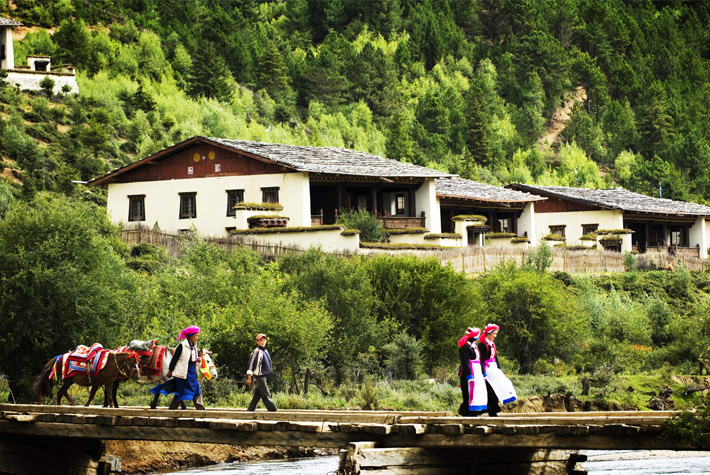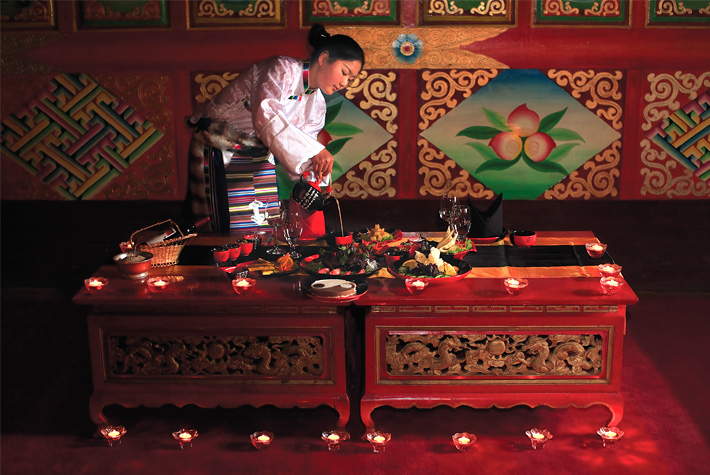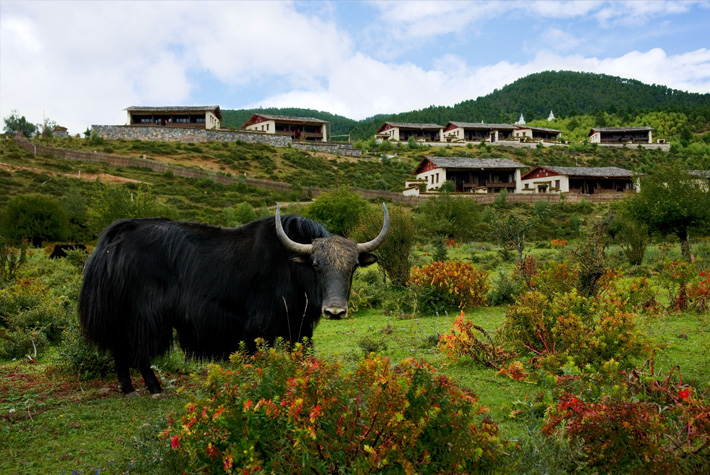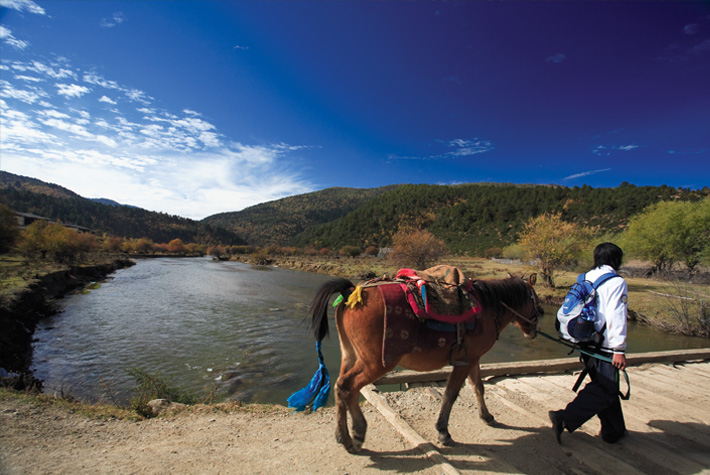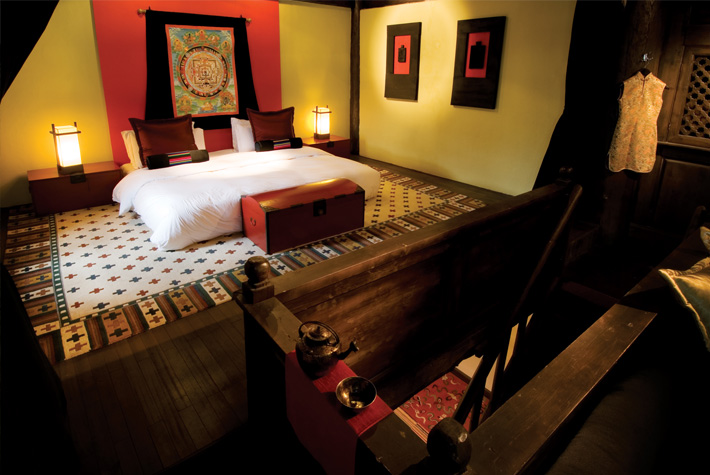Banyan Tree Ringha – China
Spa
There’s no better place to relax than on the top of the world and the Banyan Tree Ringha Spa has some great treatments.
The spa treatments are inspired by traditional Himalayan practices and the ancient Chinese Five Elements philosophy.
We relax in the spacious spa lobby, surrounded by intricate carvings and handcrafted Tibetan artifacts, and sip on warm tea before embarking on the quintessential Banyan Tree Spa experience.
The 90-minute Tibetan Tiptoe is perfect for reviving tired feet from too much trekking in the hills. It includes a herbal foot soak and scrub followed by a full hour of foot reflexology, which relieves tension and improves energy flow to the whole body. Scented sweet vanilla paraffin infused with cocoa bean and soybean extract seals moisture into the skin for a tiptoe finale… ahh bliss.
Features
The retreat offers some great tours that immerse guests in the Tibetan culture with visits to popular attractions.
“Walk slowly and don’t rush,” says our guide, who advises us on how to lessen any altitude effects of being 3600 metres above sea level.
“It is all about acclimatising gradually,” she adds, as we wander over grasslands and visit a modest temple with prayer flags flapping in the breeze.
This small temple is a vast contrast to the area’s massive Songzanling Monastery, which is nicknamed little Potala Palace as opposed to Lhasa’s Potala Palace.
The Songzanling Monastery stands majestically at the foot of Foping Mountain. The 333-year-old monastery’s gilded copper roof that shines in the sunlight can be seen from a great distance away.
Home to more than 700 monks, the lamasery with its many temples, prayer halls and chortens was built in 1679 and is the largest Tibetan Buddhist lamasery in Yunnan.
What I loved
Watching women in their traditional pink headdress with cute babies on their back and a mischievous grubby faced young monk poking his head out from a monastery door.
The sound of tinkling bells on the black and white goats that scamper over the stones below our farm house.
Across the other side of the valley, there are some fat yaks, a few horses and black and pink pigs enjoying a drink from the stream under the watchful eye of a shepherd dressed in a warm coat and hat.
My thoughts return to the book, The Lost Horizon penned by British writer James Hilton, whose main character stumbles across what he describes as the most beautiful place on earth and calls it Shangri La.
Fabled or not there’s been much talk that around here is the real Shangri La, which in Tibetan means the “sun and moon in heart”, an ideal home only found in heaven.
No one is exactly sure where it is but I think I am pretty close.
But whether or not it’s Hilton’s real Shangri La it doesn’t matter — this is definitely my version of heaven on earth.
Details
For bookings go to banyantree.com or email [email protected]
Ringha is 3200 metres above sea level. It is recommended travellers acclimatise in Lijiang before heading to higher altitudes.
Sue Wallace
© Copyright The Finer Things

